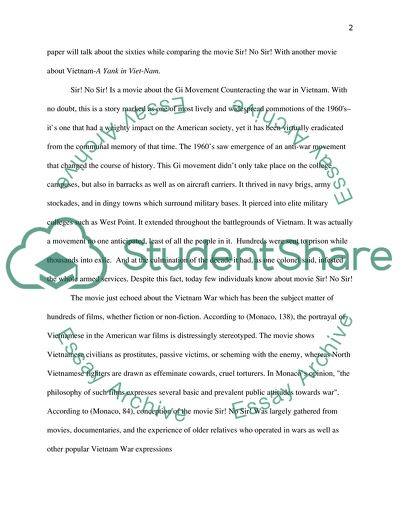Cite this document
(The Sixties - Sir No Sir And the Movie A Yank in Viet-Nam Compared Review, n.d.)
The Sixties - Sir No Sir And the Movie A Yank in Viet-Nam Compared Review. Retrieved from https://studentshare.org/visual-arts-film-studies/1830776-the-sixtese
The Sixties - Sir No Sir And the Movie A Yank in Viet-Nam Compared Review. Retrieved from https://studentshare.org/visual-arts-film-studies/1830776-the-sixtese
(The Sixties - Sir No Sir And the Movie A Yank in Viet-Nam Compared Review)
The Sixties - Sir No Sir And the Movie A Yank in Viet-Nam Compared Review. https://studentshare.org/visual-arts-film-studies/1830776-the-sixtese.
The Sixties - Sir No Sir And the Movie A Yank in Viet-Nam Compared Review. https://studentshare.org/visual-arts-film-studies/1830776-the-sixtese.
“The Sixties - Sir No Sir And the Movie A Yank in Viet-Nam Compared Review”. https://studentshare.org/visual-arts-film-studies/1830776-the-sixtese.


